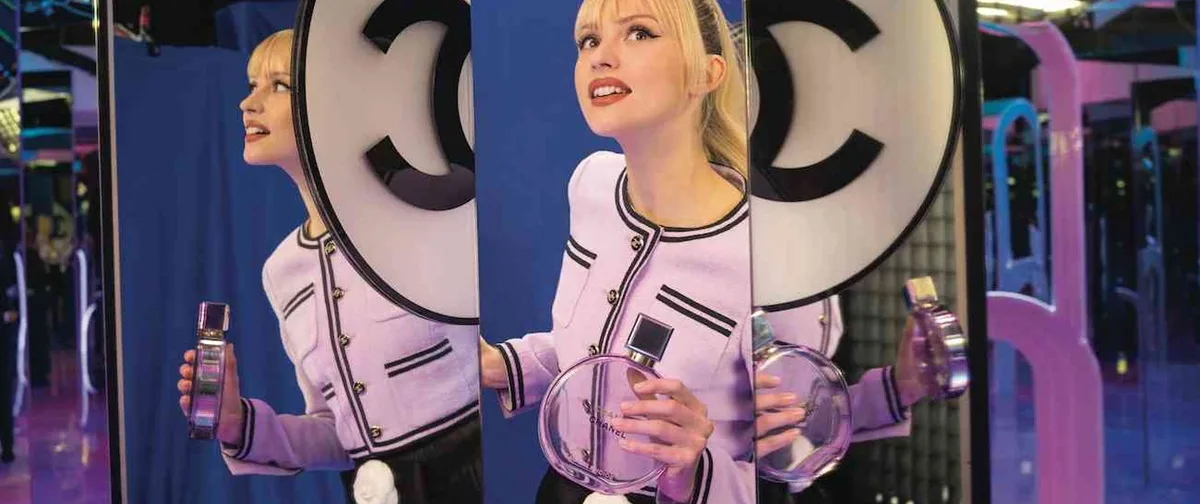MINI has been committed to sustainability earlier than most traditional car brands. Last year, the company announced that their last combustion engine model will be launched in 2025 and that the brand will become electric only from the early 2030s. But before that, they have been doing a lot of homework to show how invested MINI is in the circular economy.
For starters, their plants at Oxford and Swindon recycle or recover 99 percent of their waste, use up to 340 percent recycled materials in every car they produce, they don’t use any deep-sea minerals … the list goes on and on. Somehow though, they needed a pin-up car to show off everything they have achieved so far in this field, which is the reason why last summer they presented the MINI Strip, a custom-made, one-off model co-created by Sir Paul Smith and MINI, shining the spotlight on the issue of sustainability in automotive design and manufacturing. Just over a week ago, the car was exhibited at Goodwood Revival together with MINI Recharged, another one-off by the iconic designer that takes the Paul Smith MINI from 1998 into the new world of automotive electrification.

MINI Strip has been reduced to its structural essence, with sustainability taking the front seat.
Sir Paul Smith was there to share with the public what all the fuss was about. First, he explained to us the concept of MINI Strip, “As its name indicates, the process began by completely stripping down the MINI Electric and reducing it to its structural essence, keeping only the absolutely necessary with sustainability taking a front seat.” The end result is truly a product of the concept, down to the fact that the exterior body has been left with the blemishes the steel panels came with and only a layer of transparent paint has been applied to protect against corrosion. “Like your favourite pair of jeans,” says Sir Paul Smith, “that are a bit worn and have a few marks here and there.” The grille trim and aerodynamic covers on the wheels are made from recycled Perspex as it is the panoramic roof.
Inside, the car is simply delightful. All trim parts have been purposefully omitted (with the exception of the dashboard, topper pad and parcel shelf), turning the bodyshell into the dominant visual feature of the cabin. It has been coloured blue at the explicit request of Paul Smith, producing a particularly eye-catching effect in contrast with the exposed basic material, very much in line with the tradition of having colourful lining in his suit collections. If you are worrying about navigation and stuff like that, please do not, there is a magnet in the middle onto which to stick your phone, connect it to the car and use all the apps in it.

From cork sap used as glue, to fully recyclable seats, the interior of MINI Strip is an ode to sustainable automotive design.
The green warrior’s dream continues with seats that are upholstered in a fully recyclable knitted fabric, floor mats made of recycled rubber, dashboard, door shoulders and parcel shelf from recycled cork which doesn’t contain any glue, the sap of the cork acts as the binding agent. Sir Paul Smith’s love for cycling shows in details like the steering wheel, which rim has been wrapped in handlebar tape in true road bike style. The pull handles on the doors are made from wound climbing rope and, together with the matching seat belts, bring a lively touch of colour to the cabin with their bright orange finish.
Raw, bare, perfectly imperfect. I love it.
On the other hand, MINI Recharged pays homage to the model Sir Paul Smith designed back in 1998 in his first collaboration with the brand, a limited edition of 1,800 cars. “It was much more difficult that I initially thought,” he remembers smiling, “most of the stuff I proposed to the engineers was turned down. About the only thing that was straight forward was the colour. I wanted a very specific blue, the one in the shirt I was wearing, so I cut off a bit of it and gave it to their guys. They matched it perfectly.”
MINI Recharged is an update of the Paul Smith model from 1998, taking the lead from MINI Strip.

Taking the lead from MINI Strip, MINI Recharged has also been stripped down of almost everything that is not absolutely necessary. Part of it is to pay homage to the great Sir Alec Issigonis, creator of the first Mini, in response to the oil crisis of 1959, based on the idea of minimum fuel consumption and maximum use of space. “Issigonis was very brave when he designed it,” Sir Paul comments, “he kept the Mini incredibly simple with none of the decoration that was so popular at the time. To me it is a bit like in a fashion show. You have 15 minutes and about half a million pounds to say want you want to say, and you need to know what to go for, whether that is colour, shape or something else, but you can’t do it all.”

The original MINI Paul Smith stripped down and ready to become MINI Recharged.
Sir Paul explains it with a wonderful comparison, “When you move into your old aunt’s flat, out of respect you don’t change everything, but you do some modernising.” That modernisation manifests mostly in the interior, which takes the lead from MINI Strip. They have basically taken everything out and use a lot of yellow, which makes a great contrast with the blue outside and the lime green of the battery box. By deliberately leaving out trim parts, the bodyshell with its bare, unclad floor pan dominates the interior, with rustic floor mats made of recycled rubber on top.
In addition to innovative, resource-saving materials, Sir Paul Smith’s design leaves out entire instruments in other places. Like in MINI Strip, a magnet next to the steering wheel accommodates the smartphone, which, apart from the speedometer, replaces almost all the old buttons and functions on the dashboard. The steering wheel in this exclusive model can be completely removed to facilitate getting in and out of the car. Very clever.

Sir Paul Smith’s design for the interior of MINI Recharged includes a magnet for a smartphone, which replaces almost all the old buttons and functions on the dashboard.
Part of making this dream a reality is owed to the engineers from ‘Recharged Heritage Limited’, a company in Manchester. They converted the classic Mini into an emission-free vehicle by installing a 72-kilowatt electric motor. Thanks to the publicity around this project, Sir Paul tells me that they got lots of orders from people who want to give their Mini a new lease of life. “I think it is wonderful that this initiative has encouraged people to update their favourite car to be able to enjoy it again and take their grandchildren for a ride,” he comments. Other garages around the world are also seeing owners of classic Minis enquiring about modernisation and electrification. “Ideas are never the problem,” he adds, “you can find them everywhere. The challenge is to implement them. Here it worked. A dream has come true.”
I personally very much like the idea of many more of these wonderful cars on our streets and roads.
Words: Julia Pasarón

















Show Comments +